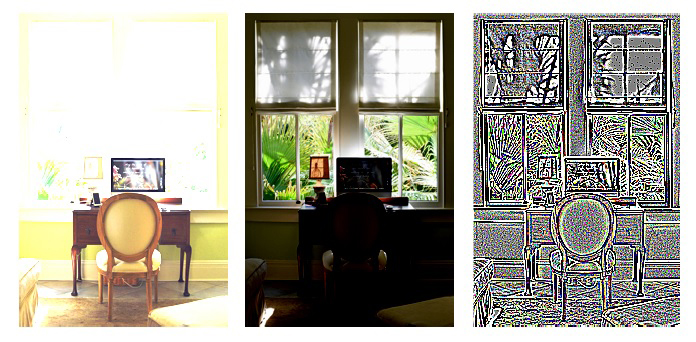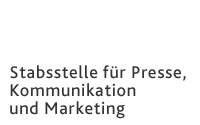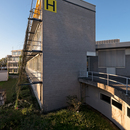Executive Department for
Press, Communication and Marketing
Adolf-Reichwein-Straße 2a Gebäude AVZ (Gebäudeteil AR-NA) 57068 Siegen
Phone: +49 (0)271/740-4915 Fax.: +49 (0)271/740-4911 E-Mail: presse@uni-siegen.de
Siegen Earns Funding as Hub for Research into Artificial Intelligence
The German Research Foundation (DFG) is funding a research unit on artificial intelligence at the University of Siegen.
As part of its strategic funding initiative in the field of Artificial Intelligence (AI), the German Research Foundation (DFG) will be funding eight new research units—including one at the University of Siegen. The “Learning to Sense” project, with Prof. Michael Möller of the Chair for Computer Vision as its spokesman, is based at the university. Its funding is initially scheduled to run for four years, with the option of a four-year extension. “I'm quite thrilled about the success we've found in positioning the University of Siegen as a high-profile site for AI research,” says Prof. Thomas Mannel, Prorector for Research and Young Scientists. “In particular, the links between artificial intelligence and sensors, which already have a long tradition in Siegen, open up new perspectives.” The new units will receive a total of around 31.4 million euros. The University of Siegen has applied for 3.2 million euros.
 A simple self-test using your smartphone camera highlights the importance of this research topic. Try photographing an object—such as a desk—in front of a bright window. You’ll quickly find that the interior and exterior objects are never equally well illuminated. Focus on the desk, and the trees outside the window and other exterior objects will usually be hard to see. By contrast, the trees outside become easier to see if you focus on the window, but then the interior will be much too dark—with the desk barely visible. These are the issue that arise at present when a computational algorithm instead of the human eye is tasked with identifying the contents of the image; neither variant works quite right. Researchers are exploring how artificial intelligence can be harnessed to control both the sensors and the assessment of the image data to resolve this kind of problem. One part of the answer: machine learning and the image sensor on the camera must be designed to allow the maximum of information to be extracted from the data without necessarily generating a visually pleasing image.
A simple self-test using your smartphone camera highlights the importance of this research topic. Try photographing an object—such as a desk—in front of a bright window. You’ll quickly find that the interior and exterior objects are never equally well illuminated. Focus on the desk, and the trees outside the window and other exterior objects will usually be hard to see. By contrast, the trees outside become easier to see if you focus on the window, but then the interior will be much too dark—with the desk barely visible. These are the issue that arise at present when a computational algorithm instead of the human eye is tasked with identifying the contents of the image; neither variant works quite right. Researchers are exploring how artificial intelligence can be harnessed to control both the sensors and the assessment of the image data to resolve this kind of problem. One part of the answer: machine learning and the image sensor on the camera must be designed to allow the maximum of information to be extracted from the data without necessarily generating a visually pleasing image.
The Siegen team is working on linking sensor technology and machine learning for better performance on specific applications like the simplified one presented above. “Image capture and analysis should be considered jointly and not— as has been the practice to date—separate from one another,” says Prof. Michael Möller. The joint interdisciplinary development of sensor systems, simulations, and machine learning has tremendous potential in many areas of computer vision. What’s needed is the development of new image sensors as well as basic research in the field of machine learning.
One potential field of application is 3D microscopy of cells. Siegen researchers working under Prof. Ivo Ihrke are for example exploring how sensor systems and machine learning processes can be redesigned to better visualize how cancer cells develop and other biology-related scenarios. Another potential application is in materials analysis. Prof. Peter Haring Bolívar and his team are building sensors in the terahertz frequency spectrum to afford a better look under the surface of construction components. Yet another field of application for the sensors is being explored by Prof. Bhaskar Choubey and his team, who are researching ways to attune CMOS sensors for cameras in the visible light spectrum to better support machine learning processes. The task of designing the simulations required for joint optimization of sensor systems and machine learning falls primarily to the team under Prof. Andreas Kolb. Prof. Margret Keuper, Prof. Volker Blanz and Prof. Michael Möller and their teams are working together on new machine learning and streamlining processes that will optimize the degrees of freedom of sensor systems and neural networks that analyze the data. All professors in the research unit are part of the Center for Sensor Systems (ZESS) and Faculty IV at the University of Siegen.
Alongside the University of Siegen, other funding recipients include the HU Berlin, TU Kaiserslautern, and the universities in Bonn (two projects), Bremen, Frankfurt and Karlsruhe.


